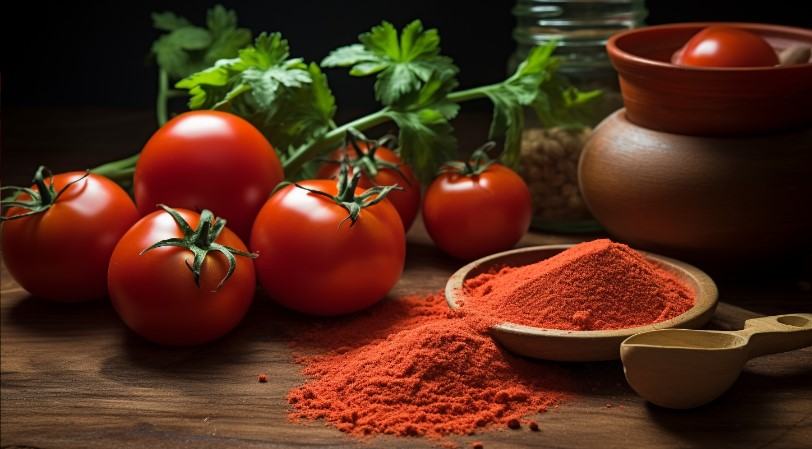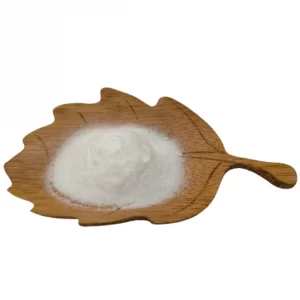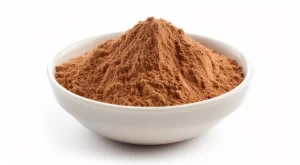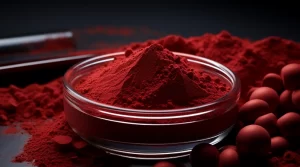Fortschritte bei der Synthese von drei typischen Tetriterpenoiden: Beta-Carotin, Lycopin und Astaxanthin

Hintergrund der Forschung
Carotinoide sind typische Tetriterpenoide, eine Klasse von wichtigen natürlichen Pigmenten, die in Tieren, Pflanzen, Pilzen und Algen vorkommen. Die derzeit gebräuchlichsten und am häufigsten verwendeten Carotinoide sind β-Carotin, Lycopin und Astaxanthin. Mit der Entwicklung der Isolierungs- und Analysetechnik wurden auch einige neue Carotinoide (Cyclococcinin, Dandelaxanthin usw.) untersucht und eingesetzt. Je nach chemischer Struktur lassen sich die Carotinoide in zwei Kategorien einteilen: Zum einen gibt es Carotinoide, die nur Kohlenstoff und Wasserstoff, aber keinen Sauerstoff enthalten, wie z. B. Beta-Carotin und Lycopin; zum anderen gibt es Carotinoide, die Hydroxyl-, Keton-, Carboxyl- und andere sauerstoffhaltige funktionelle Gruppen enthalten, wie Lutein und Astaxanthin. Inhalt der Forschung
Carotinoide werden in der Regel auf folgende Weise gewonnen. Extraktion mit organischen Lösungsmitteln: Übliche organische Lösungsmittel sind Aceton, Petrolether, Dimethylsulfoxid, Ethylacetat usw. Es gibt jedoch einige Probleme, wie z. B. eine niedrige Extraktionsrate, geringe Reinheit und Sicherheitsrisiken. Chemische Synthese: Diese Methode ist eine der wichtigsten Methoden für die großtechnische Herstellung von Carotinoiden. Die meisten Carotinoide können aus α- und β-ionischen Ketonen durch eine Reihe komplexer chemischer Reaktionen wie Acetylierung, Ansäuerung, Hydrierung, Halogenierungs-Umlagerung und Witting-Reaktion hergestellt werden. Biosynthese: Der Biosyntheseweg der Carotinoide kann in zwei Stufen unterteilt werden: Die erste Stufe ist die Synthese von Isopren aus Kohlenstoffquellen, das eine häufige Vorstufe der Carotinoide ist; die zweite Stufe ist die Synthese der nachgeschalteten Carotinoide. Die Synthese der verschiedenen Carotinoide wird durch unterschiedliche Enzyme beeinflusst. In der ersten Stufe wandeln die Mikroben die Kohlenstoffquelle in Zwischenprodukte wie CoA, Pyruvat und Glyceraldehyd-3-Phosphat um, die dann über den Mevalonat-Weg (MVA) und den 4-Phospho-Methylerythritol-Weg (MEP) oder den künstlichen Isopentenol-Verwertungsweg (IUP) in die Vorstufe Isopren umgewandelt werden.
Als Chassis-Stämme für die Produktion von Carotinoiden wurden Escherichia coli, Saccharomyces cerevisiae usw. ausgewählt. Escherichia coli ist der in der industriellen Biotechnologie am häufigsten verwendete Chassis-Mikroorganismus, da er über ausgereifte genetische Werkzeuge verfügt und sich leicht kultivieren lässt. So verfügt Escherichia coli beispielsweise über einen natürlichen MEP-Stoffwechselweg im Körper, und nur durch die Einführung von Carotinoid-Genen kann eine heterologe Carotinoid-Biosynthese erreicht werden. So wurde nach Überexpression des Carotin-Gens von Erwinia mit synthetischen Operons eine Form von E. coli, die Beta-Carotin produziert, genetisch konstruiert. Die rekombinanten Bakterien produzierten schließlich 390 mg/l Beta-Carotin in einem 50-Liter-Fermenter 25. Durch die Einführung des gesamten MVA-Wegs zur Steigerung der Synthese des Vorläufers IPP und die Fütterung der Batch-Kultur erreichte die maximale Ausbeute an β-Carotin in den gentechnisch veränderten Escherichia coli 663 mg/l. Im manipulierten Stamm DH416 konnte der Lycopingehalt 1,22 g/L erreichen, und der durchschnittliche Ertrag betrug 61,0 mg/L-h-1. Der Syntheseweg von Mevalonat und Lycopin wurde in Escherichia coli FA03-PM etabliert. Bei der Fermentation im Fed-Batch-Verfahren wurde ein Lycopingehalt von 94 mg/g erreicht, was der höchste Wert ist, der bisher in metabolisch veränderten Escherichia coli erreicht wurde. Bei der Produktion von Astaxanthin aus Escherichia coli CAR026 als Ausgangsstamm produzierte der rekombinante Stamm Gro-46 unter Fütterungsbedingungen 1,18 g/l Astaxanthin, was die bisher höchste Produktion von Astaxanthin in gentechnisch veränderten Escherichia coli darstellt. Da Saccharomyces cerevisiae nicht über einen vollständigen Carotinoid-Stoffwechselweg verfügt, werden heterogene Carotinoid-Gene in Saccharomyces cerevisiae eingeführt. Nach der Einführung des CRT-Gens der roten Hefe in Saccharomyces cerevisiae INVSc1 erhöhte sich beispielsweise durch die Überexpression von rekombinantem Saccharomyces cerevisiae INVSc1 bei 20℃ der β-Carotin-Gehalt auf 528,8μg/g. Ungesättigte Fettsäuren können die Fluidität und den Speicherplatz der Zellmembranen verbessern und dadurch die Produktion von Carotinoiden erhöhen. Eine Supplementierung mit 60mg/L Ölsäure oder Palmitoleinsäure erhöhte den Beta-Carotin-Gehalt um 83,7% bzw. 130,2%. Was die Lycopinproduktion betrifft, so kann Saccharomyces cerevisiae durch die Optimierung von Lycopinsynthasen aus verschiedenen Quellen bis zu 3,28 g/L Lycopin produzieren. Eine Gal4-Mutante mit einem temperatursensitiven (TS) Phänotyp von Saccharomyces cerevicae akkumulierte 44% mehr Biomasse und 177% mehr Lycopin durch zweistufige Fermentation als der Wildtyp Gal4. Gleichzeitig wurde das System zur Regulierung der Temperaturreaktion in die transgene Saccharomyces cerevisiae zur Astaxanthinproduktion eingeführt, und die Astaxanthinproduktion wurde vom Zellwachstum getrennt. Schließlich wurden 235mg/L Astaxanthin durch zweistufige Fermentation mit hoher Dichte produziert.
Mit der raschen Entwicklung der synthetischen Biologie, des Protein-Engineerings, des Metabolismus-Engineerings und des Fermentations-Engineerings werden synthetische Mikroorganismen zweifellos eine neue Möglichkeit für die großtechnische Produktion von Naturprodukten bieten. Gegenwärtig sind synthetische mikrobielle Co-Kultursysteme vollständig auf die Synthese von Metaboliten durch Arbeitsteilung ausgelegt, insbesondere von Metaboliten mit langen Stoffwechselwegen. Die Entwicklung eines angemessenen mikrobiellen Co-Kultursystems und die Modularisierung der Synthesewege für Carotinoidprodukte können daher den metabolischen Druck einzelner Zellen wirksam verringern und ein metabolisches Energiegleichgewicht erreichen.
Aufgrund der weit verbreiteten Verwendung von Carotinoiden in Lebensmitteln und in der Medizin wird auch die Nachfrage nach natürlichen Carotinoiden steigen. Die direkte Gewinnung von Carotinoiden aus natürlichen Ressourcen ist weit davon entfernt, den Bedarf der Verbraucher zu decken. Daher ebnet die Synthese natürlicher Carotinoide durch mikrobielle Fermentation den Weg für die Massenproduktion.
Autor: Nanjing Universität für Technologie, Xin Feng Xue, Zhang Wenming
Zeitschrift: Biotechnology Advances
Jahr: 2022
DOI:doi.org/10.1016/J.BIOTECHADV.2022.108033
() ()


